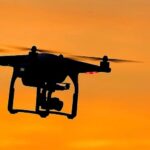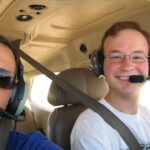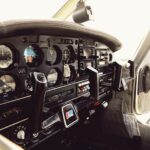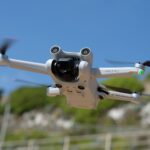
Key Takeaways
- Part 107 certification is mandatory for commercial drone operations in the U.S.
- Eligibility for the Part 107 exam includes being at least 16 years old and fluent in English.
- Preparation for the exam involves studying regulations, airspace classification, weather, and drone operations.
- After passing the exam, pilots must apply for their license and adhere to ongoing requirements.
- Commercial opportunities for certified drone pilots are expanding across various industries.
Launch Your Drone Flying Career
Embarking on a journey to become a certified drone pilot is both exciting and rewarding. With the surge in drone technology, the sky’s literally the limit when it comes to career opportunities. Whether you’re eyeing real estate photography, surveying, or even starting your own drone business, obtaining a Part 107 drone license is your first step towards liftoff.
Understanding the Part 107 License Requirements
Before you can soar the skies professionally, you need to understand what the Part 107 certification entails. The Federal Aviation Administration (FAA) requires this certification for anyone who wants to operate a drone for commercial purposes. That means if you’re planning to profit from flying a drone, whether it’s through aerial photography or providing drone-based services, you need to be Part 107 certified.
Eligibility Criteria for Potential Pilots
Let’s talk about who can become a Part 107 certified drone pilot. It’s simpler than you might think:
- You must be at least 16 years old.
- You need to be able to read, write, and understand English.
- Being in a physical and mental condition to safely fly a drone is a must.
- No need to be a U.S. citizen, but you do need to be legally allowed to work in the States.
If you tick all these boxes, you’re on your way to becoming a certified drone pilot. Next, you’ll need to pass the Part 107 exam to get your license.
Most importantly, the Part 107 exam isn’t just a formality; it’s a comprehensive test of your knowledge on drone regulations, airspace classification, weather impacts on drone performance, and ethical flying practices.
Creating an Effective Study Plan
Preparing for the Part 107 exam isn’t just about reading material; it’s about creating a study plan that ensures you cover all the necessary topics. Start by setting aside dedicated study times each day and stick to them. Break down the material into manageable sections so you can focus on one area at a time, such as weather patterns, airspace restrictions, or drone maintenance.
Here’s a simple study plan to get you started:
- Day 1-3: Learn the basics of unmanned aircraft systems (UAS).
- Day 4-6: Dive into FAA regulations and operational procedures.
- Day 7-9: Study airspace classification and flight restrictions.
- Day 10-12: Understand weather and how it affects drone performance.
- Day 13-14: Review all topics and take practice exams.
Remember, consistency is key. One hour of focused study each day is better than cramming all the information in one sitting.
Tips and Strategies for Exam Success
When it comes to acing the Part 107 exam, there are several strategies that can help:
- Take practice exams to familiarize yourself with the format and types of questions.
- Identify your weak areas and allocate more time to those subjects.
- Use flashcards for quick review of key terms and concepts.
- Join study groups or online forums to discuss and clarify doubts.
- Stay calm and well-rested before the exam day to ensure peak performance.
Because the exam is comprehensive, understanding the material, not just memorizing it, is essential for success.
After the Exam: What Comes Next?
Once you’ve passed the Part 107 exam, you’re not quite done yet. You’ll need to apply for your Remote Pilot Certificate through the FAA’s Integrated Airman Certification and Rating Application (IACRA) system. This process involves verifying your identity and passing a background check by the Transportation Security Administration (TSA).
How to Apply for Your Drone License Post-Exam
Here’s how to apply for your license after passing the Part 107 exam:
- Complete the FAA Form 8710-13 for a remote pilot certificate (FAA Airman Certificate and/or Rating Application).
- Register using the FAA’s IACRA system to submit the application.
- Once the TSA completes their security background check, you’ll be issued a temporary electronic Remote Pilot Certificate.
- Your official card will arrive by mail, typically within several weeks.
Remember, your certification is just the beginning of your journey as a drone pilot.
Maintaining Your Part 107 Certification
To keep your Part 107 certification current, you must pass a recurrent knowledge test every 24 months. This ensures you’re up to date with the latest regulations and safety practices. Additionally, always make sure to keep your personal information and address current with the FAA, as this is a legal requirement for all certified pilots.
Maximizing Your Drone Piloting Opportunities
With your Part 107 certification in hand, the opportunities for drone piloting are vast. Drones are revolutionizing industries from agriculture to cinematography. To maximize your opportunities, stay informed about industry trends, continue to hone your skills, and network with other drone professionals.
Exploring Commercial Drone Applications
Here are some of the most popular commercial drone applications:
- Aerial photography and videography for real estate or events.
- Land surveying and mapping for construction and agriculture.
- Inspection services for infrastructure, such as power lines and pipelines.
- Search and rescue operations to aid emergency services.
These are just a few examples of how drones are being used commercially. The potential is only limited by your imagination and willingness to explore new applications.
Finding Work in the Drone Industry
Breaking into the drone industry can be as simple as starting your own business or as complex as working for a large corporation. Here are some steps to help you find work:
- Create an online portfolio showcasing your drone work.
- Network with industry professionals at events or online.
- Stay updated on job boards and company websites for openings.
- Consider obtaining additional certifications or specializations to stand out.
Remember, the drone industry is evolving rapidly, so keep learning and adapting to new trends and technologies.
Frequently Asked Questions
Is the Part 107 Certification Process Difficult?
The difficulty of the Part 107 certification process varies from person to person. It covers a wide range of topics, including airspace regulations, weather, drone operations, and more. With proper study and preparation, many find the process manageable. The key is to understand the material thoroughly, not just memorize it for the test.
Moreover, many resources are available to help you prepare, including online courses, practice tests, and study guides. Dedication and a systematic approach to learning will go a long way in making the process smoother.
Can I Retake the Part 107 Exam If I Don’t Pass?
Yes, if you don’t pass the Part 107 exam on your first try, you can retake it after 14 days. It’s important not to be discouraged. Use the experience to identify the areas where you need to improve and focus your studies accordingly before attempting the exam again.
Do I Need Prior Flying Experience Before Taking the Exam?
No, you do not need prior flying experience to take the Part 107 exam. The test focuses on knowledge of drone regulations, safety practices, and understanding airspace. However, practical flying experience can be beneficial and will certainly be necessary for actual drone operations once you’re certified.
How Long Does the Part 107 Certification Last?
- Your Part 107 certification is valid for 24 months from the date of issue.
- To maintain the certification, you must pass a recurrent knowledge test every two years.
- Keeping your certification current is crucial to continue flying drones for commercial purposes legally.
Staying up-to-date with the recurrent training not only keeps you legal but also ensures you’re aware of any changes in regulations and best practices.
Are There Any Recurrent Training Requirements for Part 107 Pilots?
Yes, Part 107 pilots must complete recurrent training every 24 months to keep their knowledge current and maintain their certification. This can be done by passing an online recurrent knowledge test provided by the FAA. This ensures that you remain knowledgeable about the latest safety practices and regulations.
Remember, the world of aviation is always evolving, and as a drone pilot, you need to evolve with it. Continuous learning and staying abreast of industry changes will help you maintain your status as a safe and responsible remote pilot.






Leave a Reply